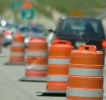
ASSE Fact Sheet Highlights Work Zone Safety
Every year since 1992, transportation accidents have been the leading cause of on-the-job deaths in the U.S, said the American Society of Safety Engineers (ASSE).
ASSE recently released its Work Zone Safety for Highway Construction standard, A10.47-2009.
“The Occupational Safety and Health Administration (OSHA) has few standards that cover work zone safety and standards also vary by state,” said Scott Schneider, standard committee chair. “The A10.47 standard is intended to fill the gap and to help contractors develop best practices to protect the safety and health of road construction workers. Each year many construction workers are killed in work zones. Their deaths could have been prevented. They were run over by motorists, backed over by construction vehicles, and electrocuted by overhead power lines.”
Drivers and workers play a role in maintaining a safe work zone area during roadway construction. ASSE members have developed tips to follow when driving through a work zone.
Do:
- Pay attention to the orange diamond-shaped warning signs or electronic message boards posted in advance of a road construction project.
- Stay alert. Dedicate your full attention to driving.
- Minimize distractions. Avoid changing radio stations and using a cell phone while driving in a work zone.
- Drive carefully and slowly through the construction site; always obey the posted speed limits in the work zone area.
- Pay close attention; heed directions on work zone warning signs. Signs and work zone flaggers save lives.
- Watch for stopped or slowing traffic. Do not tailgate.
- Expect the unexpected. Anticipate potential dangers.
- Watch how far-off traffic is flowing.
- Keep an eye out for construction workers, equipment and vehicles, as well as the vehicles around you.
- Use extra caution when driving through a site at night.
- Watch for detours and lane diversions.
- Most states have instituted new laws regarding work zones; penalties for speeding in these areas are double that of the normal penalties for speeding in a non-work zone stretch of road.
Don’t:
- Speed up or slow down significantly while going through a work zone.
- Slow down to look at the construction work being done.
- Resume normal speed until after you emerge completely out of the work zone area.
- Tailgate — most of the accidents within a work zone are rear-end collisions.
- Change lanes within a work zone.
For more information, visit ASSE’s Web site, www.asse.org.